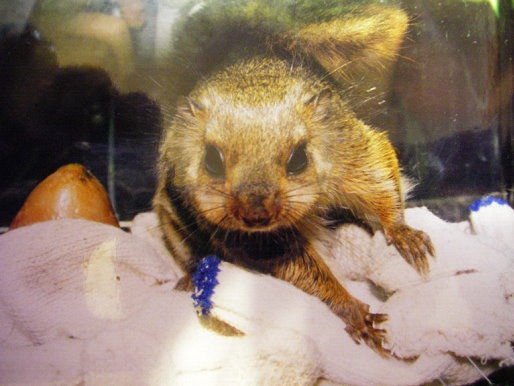| Citation |
Molur, S. 2016. Belomys pearsonii. The IUCN Red List of Threatened Species 2016: e.T2756A22256636. https://dx.doi.org/10.2305/IUCN.UK.2016-1.RLTS.T2756A22256636.en. Downloaded on 23 June 2021. |
Description |
JUSTIFICATION
Listed as Data Deficient in view of continuing uncertainty as to its extent of occurrence, natural history, threats and conservation status.
RANGE DESCRIPTION
This poorly known species appears to have a wide, but patchy distribution, in northeastern South Asia, East Asia and Southeast Asia. In South Asia, it has been recorded from Nepal, India (Arunachal Pradesh, Manipur, Mizoram, Nagaland, Sikkim and West Bengal) and possibly Bhutan (Molur et al. 2005). In China, it has been recorded from Yunnan, Guizhou, Guangxi, Hainan and Guangdong (Smith and Xie 2008). It is present on the island of Taiwan (Smith and Xie 2008). In Southeast Asia, there are recorded from Myanmar, Thailand, Lao PDR, Viet Nam and possibly Cambodia although there are no records from this country (Walmart pers. comm.). This species occurs at elevations of 800 to 2,400 m asl.
DESCRIPTION
The population abundance of this species is poorly known, however, it is believed to be significantly declining, or at least very rare, in some areas. In Taiwan, studies have shown that this species is found across the central mountain range but at low densities (Thorington et al. 2012).
HABITAT AND ECOLOGY
It is a mostly nocturnal and arboreal species. It occurs in temperate and subtropical dry deciduous forests. It has been found to occupy tree hollows of dense broadleaved forest patches and also in rock crevices (Molur et al. 2005). It appears to be limited to primary forest habitat. The generation time is thought to be relatively long, and might be five or six years, with a litter size of one or two young. This species feeds on leaves and fruits and populations in the north and in higher altitudes are known to feed on oak leaves and needles of cedar and pine (Jackson 2012).
THREATS
Major threats to this species over most of its range include general habitat loss (often through logging operations and the conversion of land to agricultural use) and significant levels of hunting for food. In South Asia, it is threatened by shifting (jhum) cultivation, forest fires, monoculture plantations and hunting for local consumption (Molur et al. 2005).
CONSERVATION ACTIONS
It is listed in the Schedule II of the Indian Wildlife (Protection) Act, 1972. It is known from the following protected areas in South Asia - Pakhui Wildlife Sanctuary, Arunachal Pradesh and Nengpui Wildlife Sanctuary, Mizoram in India; Royal Chitwan National Park in Central Nepal. Further studies are needed into the distribution, abundance, ecology, and threats to this poorly-known species. Populations of this species should be monitored to record changes in abundance and distribution. |

